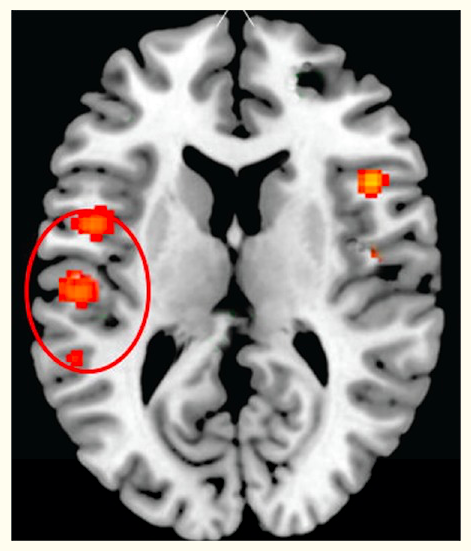How do auditory hallucinations work?
Erik Messamore, MD, PhD
Auditory Hallucinations
This week’s report will focus on auditory hallucinations. Understanding how auditory hallucinations happen will ultimately shed light on the very important question of how the mind works. We have much to learn in pursuit of this goal.
However, neuroscience has made important advances toward the needed understanding, and these are reviewed in the open-access review article “Auditory hallucinations as translational psychiatry: evidence from magnetic resonance imaging” by Kenneth Hugdahl from the University of Bergen in Norway. You can download a free copy of the article here.
The main points of his Hugdahl’s model can be summarized as follows:
- Auditory hallucinations arise from spontaneous activity within brain circuits devoted to speech perception – temporal lobe structures such as the left superior temporal gyrus and other classical speech perception areas
- The increased neuronal activity in these speech perception areas is associated with excessive levels of excitatory amino acid neurotransmitters
- When these circuits are active during hallucinations, they are less responsive to external speech.
- There is a reduced ability to spontaneously shift attention away from internally-generated signals (hallucinations) to external ones.
- Pathways relevant to auditory hallucinations appear irrelevant to the experience of negative symptoms.
Primary Imaging Finding: Increased activity within speech perception areas
Multiple lines of evidence from imaging studies (and from EEG studies) show that auditory hallucinations come from the temporal lobe.
The same real estate used to form perceptions of spoken language are active during auditory hallucinations. Specifically, the core findings of meta-analysis of functional MRI studies of auditory hallucinations are “spontaneous activation of an auditory network, with the center of gravity in the left superior temporal gyrus extending into the superior temporal sulcus, and covering the classic speech perception areas”
Figure 2 (below) from Hugdahl’s paper shows the left temporal areas active during auditory hallucinations.

Internal activation from hallucinations competes against external activation from outside sounds
So, if the speech perception areas are overly active during hallucinations, what will happen when external/outer voices are added to the internal/hallucinated ones? Hugdahl originally imagined that the activation caused by the outer voices would add to the activation caused by the inner voices, such that there would be an overall increase in the activity within the speech processing areas. That is not what happened.
Instead, the data showed that the two sources (the hallucinated voices and the external voices) ended up competing for the limited processing resources within the brain’s auditory processing areas. Further, the hallucinated voices tended to outcompete and inhibit the processing of outer voices. This explains neurocognitive findings that people with schizophrenia, on average, struggle with tone discrimination, auditory memory, auditory perceptual accuracy, or recognition of familiar voices.
Excitatory neurotransmitters mediate temporal cortex hallucinatory activity?
Magnetic resonance studies can be designed to register the concentration of certain chemicals within the brain. Instead of producing images (magnetic resonance imaging MRI), it’s possible to measure neurotransmitter levels (magnetic resonance spectroscopy, MRS). Using this approach, they found increased levels of the excitatory neurotransmitter glutamate in these spontaneously-overactive speech perception regions.
Interestingly, this finding was not obvious when they first looked at all their data. In their first look, the glutamate levels were lower among the entire sample of people with schizophrenia versus the control group.
However… they found that the group average was disproportionately affected by the individuals with infrequent hallucinations. This low-frequency-hallucinations subgroup had very low glutamate levels.
In contrast, glutamate levels in auditory processing areas were significantly elevatedin the frequent-hallucinations subgroup. This is yet another example of multiple illnesses within the schizophrenias (and the risks that signals of its diversity are lost in the noise of large groups).
Auditory hallucinations are common
Auditory hallucinations are so common in the schizophrenias that many people almost automatically associate one with the other. It’s true that auditory hallucinations are common in the schizophrenias; but auditory hallucinations go way beyond schizophrenia. Hallucinations are simply… common.
Hugdahl cites studies suggesting that up to 20% of people within a general population may experience auditory hallucinations. He cites a Norwegian study that found that 7.5% of people surveyed had experienced auditory hallucinations. This figure is in line with estimates that nearly 10% of population in the US have had at least one psychotic experience (Mc Grath et al., 2015).
Summary
Although these findings do not explain everything about auditory hallucinations, they do start to shed light on the some of the inner workings of this extremely common human experience.
The model presented is especially interesting as it can tie together findings from neurochemistry, imaging, cognition, and clinical experience.
Notably, the brain activation patterns during spontaneous auditory hallucinations are essentially identical to those seen during activation from external sound sources. This explains clinical observation and lived experience that auditory hallucinations have a lifelike quality to them.
The article discusses glutamate excess, or an excitatory-to-inhibitory imbalance as a possible cause of hallucinations. In contrast, most of pharmacotherapy for hallucinations is focused on dopamine modulation. Dopamine was not mentioned in the Hugdahl paper because its levels can’t be measured by magnetic resonance spectroscopy. On the other hand, medications that alter glutamate signaling do have an ability to reduce hallucinations. This is a fertile area for improved pharmacotherapy.